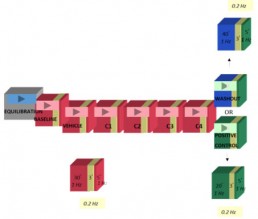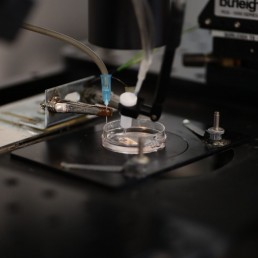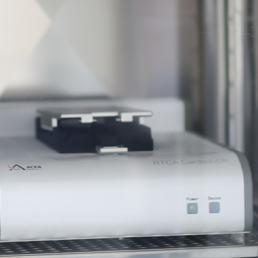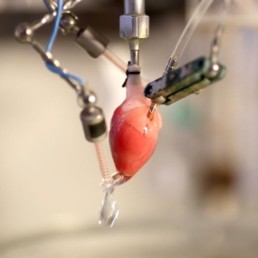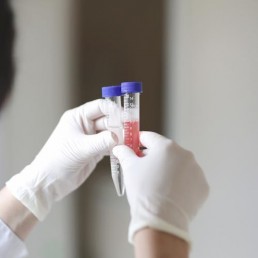Purkinje fiber

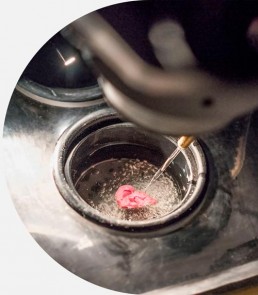
Purkinje fiber assays
Action potential from Purkinje fibers provide a reproducible and sensitive predictions of QT prolongation. Thus the ionic channels involved in the Purkinje action potenial shape are similar to those of the human ventricular repolarization. Therefore any lengthening of action potential duration (APD) are highly predictible of human QT prolongation and incidence of ventricular arrhythmias. Among species and cardiac tissues, action potential recordings in female rabbit Purkinje fibers constitute the most sensitive model to detect the effects of hERG blocking agents on cardiac repolarization. Indeed, inhibition of potassium currents contributing to the terminal phase of repolarisation of the cardiac action potential (IKr / IKs and IK1) is a mechanism by which agents increase APD.
Purkinje Fibers & Preclinical Safety Studies
Historically, action potential from Purkinje fibers was recommended to identify potential cardiotoxic effects early in drug safety. Due to the low throughtput this model is now less indicated, however it remains the unique native model expressing a functional hERG channel and therefore, it is the most sensitive predictive model for QT prolongation.
What is the added value of such a study?
- Highly native hERG channel sensitive
- Threshold concentration for QT prolongation
- To rule out potentials false-positive hERG Blocker
- Leading to the determination of the safety range versus efficacious concentration
- You obtain your safety margin
Technique
- Conventional intracellular microelectrode technique
- Rabbit Purkinje fibres
- 6 preparations tested and 6 control preparations (as basic design protocol but can be adapted)
- Options: external hypokaliemic conditions, chronic pre-treatment, incremental stimulation rate
Measured parameters
- Resting potential (mV)
- Action Potential Amplitude (mV)
- Action Potential Duration at 50%, 70% and 90% of repolarization: APD50, APD70, APD90 (ms)
- Maximal rate of depolarization: dV/dtmax (V/s)
Main Advantages
- Technically robust
- Efficiently predictive of QT prolongation
- Highly informative (most accurate IC50 value)
- Strongly replicable
Reference compounds
Reference CompoundsConcentration
Quinidine 10 µmol/L
Sotalol 30 µmol/L
Results
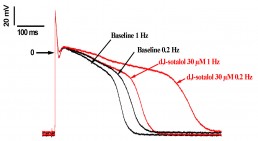
Typical effects of sotalol on rabbit Purkinje fibres at 1 and 0.2 Hz.
Stimulation protocol
- 3 or 4 cumulative increasing concentrations of assay compound
- Stimulation rates: 1 Hz and 0.2 Hz (reverse use dependency)
- Washout period or positive control at the end of the experiment
